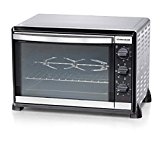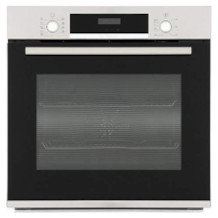Induction hob purchasing advice: how to choose the right product
- What You Need to Know
- An induction hob is a combination of an oven and an induction hob.
- Cooking with induction is particularly time- and energy-saving.
- The hob itself is not heated, only the cookware.
- Not all pots and pans are suitable for induction.
Energy-saving, efficient, user-friendly: induction hobs
State-of-the-art induction hobs are increasingly outstripping classic electric and gas hobs – and for good reason: induction hobs not only save a lot of energy, they are also extremely safe and user-friendly. For more information on the advantages of induction hobs and the criteria to consider when buying one, click here.
How does an induction hob work and what are its advantages?
Electric cookers heat the cookware in an indirect way: There are heating coils under the hob or cooker top that heat the cooking plates. These then transfer the heat to the pot or pan. Cooking with an electric cooker therefore takes a lot of time because the hob has to heat up first. During this process, a lot of energy is also radiated into the environment, which means it is lost.
Induction hobs work on a completely different principle: here there is no heating coil under the hob, but a coil through which alternating current flows. This creates a magnetic field that only heats the (magnetic) cookware, but not the hob itself. The cooking zone therefore does not get hot, but only has some residual heat from the cookware after the induction hob has been used. This offers the invaluable advantage that splashes of sauces and soups cannot burn in. In addition, the hob can be touched immediately after cooking, so there is no risk of burns.
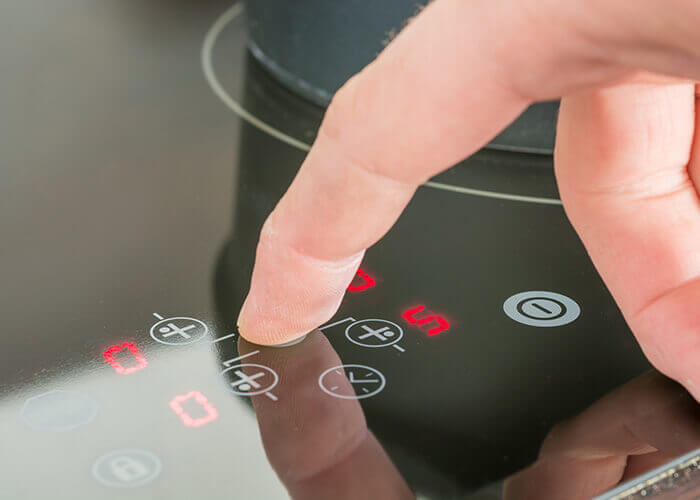
Owners of an induction hob benefit from very short cooking times, because the heat is conducted into the bottom of the pot or pan in a particularly efficient way. A conventional electric cooker, for example, needs an average of ten minutes to bring a litre of water to the boil. With an induction hob with a power of 1,400 watts, this process takes only four minutes; more powerful appliances are even faster. The induction hob also enables cooking to the point: this means that after the hob is switched off, no more heat is conducted into the cookware either. For example, once the pasta has reached the perfect cooking point, a single push of a button is all it takes for the water to stop boiling.
Here is an overview of the most important advantages of the induction hob:
- Easy to clean, as nothing can burn
- High energy savings
- Saves time when cooking
- Less risk of burns because the hob does not get hot
- Cooker only starts when pot or pan is placed on the plate
- Automatic switch-off when there is no cookware on the plate
- Long life
Does an induction hob have any disadvantages?
The magnet trick
There is a simple trick to find out whether cookware is suitable for induction: To do this, consumers hold a magnet to the bottom of the pot or pan – if it sticks, the cookware is suitable for induction hobs.
In addition to all the advantages, induction hobs also have one or two disadvantages. For example, they are more expensive to buy than classic electric and gas cookers. However, the investment pays off within a few years thanks to the lower energy costs. Nevertheless, repairs to a defective induction hob are usually very expensive due to the complex technology involved; it is therefore worth investing in quality and purchasing an appliance with a long warranty period.
It should also be noted that not all cookware is suitable for use on an induction hob: the bottoms of pots and pans must be ferromagnetic, as is the case with stainless steel, for example.
Electric, gas or induction? The types of cooker
In German households, electric, gas and induction hobs are the most common types of cooker. But what is the difference between the various types of cooker?
Electric cookers: Inexpensive to buy, but time-consuming and energy-intensive
o operate an electric cooker, you need a cooker socket with high-voltage current; however, this is available in almost every kitchen. The electric cooker should always be connected by an electrician. If a layman connects the cooker and a fire breaks out, the damage is usually not covered by insurance and the owner of the cooker can be held fully liable. Induction hobs are also operated via the mains socket, so an electrician is also essential here.
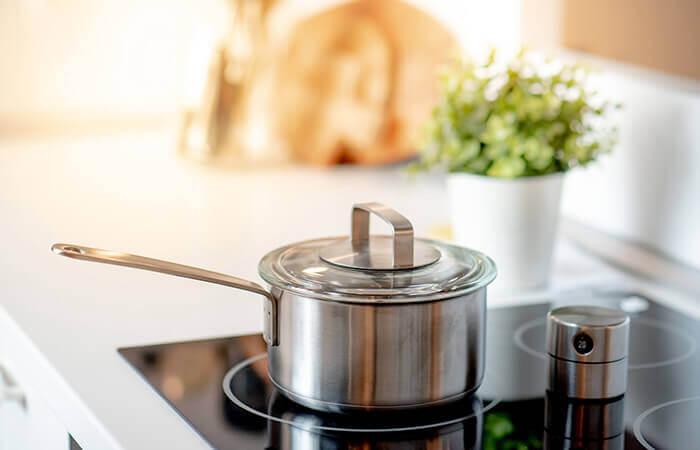
Cooking on an electric cooker is very time-consuming because the cooking zone must first be heated. This then transfers the heat to the cookware, which involves a considerable loss of energy. The cost of operating an electric cooker is therefore very high compared to gas and induction hobs. It is advisable to cook with foresight and turn hotplates down or off early: With the residual heat available, food can usually be cooked to the end without any problems.
Pro Points
- Low purchase price
- Can be used in every household
Drawbacks
- High power consumption
- Time-consuming cooking
Gas cookers: No residual heat, but risk of burns
If you want to use a gas cooker in your kitchen, you need a gas socket or, alternatively, a gas bottle with liquid gas such as propane or bhutan; the latter is, however, only common at campsites. The gas cooker is also visually different from other cooker variants: Above the hob is a stainless steel grid on which the pots and pans are placed; below it are the gas flames.
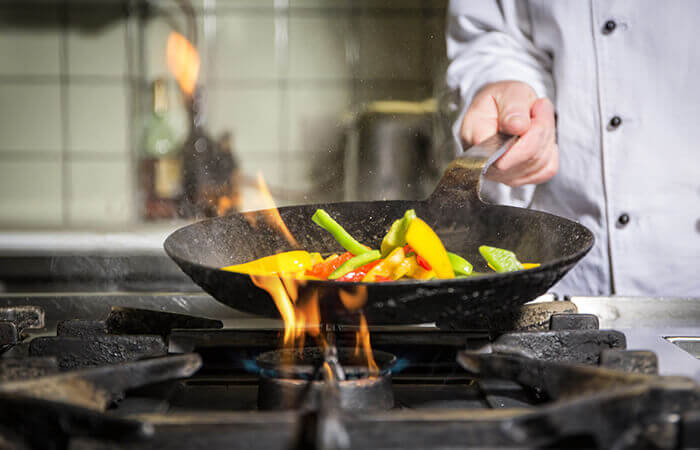
Professional and amateur cooks appreciate above all that the heat of the gas cooker can be regulated very well. Moreover, there is no residual heat. Gas cookers are characterised by low energy consumption, because gas from the tap is very cheap. However, the gas cooker is not faster than an induction hob.
Because of the open flame, not only do the pan and pot handles get very hot very quickly, but the risk of burns and fire is generally quite high. Caution is therefore advisable, especially in households with children.
Pro Points
- Natural gas is very cheap
- No residual heat
Drawbacks
- Increased risk of burns and fires
- Handles heat up quickly
The most important criteria when buying an induction hob
If you want to buy an induction hob, you should first consider what your individual requirements are for the new hob. Above all, the following criteria should be considered when buying.
The type
Induction hobs are available in two different designs: as freestanding hobs or as built-in hobs. If you already have a kitchen and only need a new cooker that should not or cannot be integrated into the kitchen unit, a freestanding induction hob is the right choice. However, this must also be placed near a power socket. It should be noted that freestanding cookers are always combined appliances – the hob and oven cannot be separated from each other.
With a built-in cooker, on the other hand, the elements are usually self-sufficient. This makes it possible, for example, to replace a defective oven and keep the hotplate. If you wish, you can also install the oven at a back-friendly height in the kitchen – in any case, a built-in oven is permanently installed in the kitchen unit. This variant is therefore particularly suitable for those who want to buy a new kitchen. Since the dimensions of most built-in ovens are standardised, installation in an existing kitchen unit should not be a problem. However, built-in cookers are usually more expensive than floor-standing appliances.
Number and quality of hobs
How many hobs an induction hob should have depends on your own cooking habits. Single and two-person households primarily need small hobs and at most a single large cooking zone. For families where large pots and pans are often used, on the other hand, an induction hob with several zones for large cookware is recommended. Alternatively, so-called dual-circuit zones are suitable, where the heat range can be increased or reduced at the touch of a button. A roasting zone that can be switched on is also extremely practical and therefore comes as standard with many manufacturers. In models from the top segment, even the entire hob is a single zone: pots and pans can therefore be placed anywhere.
The type of oven
Even if it is an induction hob, the oven is not usually operated by induction. When buying an induction hob, therefore, the main thing to consider is which oven functions are desired. Most modern appliances not only have the classic top and bottom heat, but also a hot and/or convection function. If you often prepare pizzas, it is best to choose a model with a so-called pizza stage, which ensures that the pizza is baked until it is nice and crispy.
The capacity also plays a major role when buying an induction hob. For multi-person households, an oven capacity of at least 65 to 70 litres is recommended. For single households, on the other hand, a capacity of 55 litres is usually sufficient. The following applies here: the capacity of built-in ovens is usually larger than the capacity of freestanding appliances.
Induction ovens in short supply
Ovens that work on the induction principle are still very rare. The induction principle is therefore used almost exclusively for cooking and roasting. For this reason, the oven that goes with the induction hob is always a classic electric oven with top and bottom heat and – depending on the model – with convection and/or hot-air function. In Germany, only Bauknecht includes induction ovens in its range.
Performance
The manufacturer specifies the power of the induction hob in watts. In addition, the EU label or the operating instructions contain information on the actual power consumption in kilowatt hours. This value always refers to the consumption when all hobs and the oven are switched on. A low wattage may give the impression that the power consumption is particularly low, but in this case the cooking process is also more time-consuming. If the appliance has a very high wattage, on the other hand, it is advisable to consult an electrician first, because the wiring in a house is not always designed for the operation of such powerful appliances.
The energy efficiency class
The energy efficiency class is intended to enable consumers to distinguish between energy-saving household appliances and “power guzzlers”. Thanks to technical progress, modern household appliances require less and less energy. Since 2010, the energy efficiency class A+++ has therefore been introduced in addition to the common categories A, A+ and A++. For induction hobs, models with energy efficiency class A+ are considered particularly energy-saving. The appliance should at least correspond to energy efficiency class A.
Operation
Operating an induction hob is usually very straightforward. The majority of appliances are equipped with a user-friendly touch display that can be used to adjust the temperature quickly. Nevertheless, it is always advisable to familiarise yourself with all the functions first in order to be able to use the induction hob optimally.
Safety
The sophisticated technology alone makes an induction hob much safer than an electric or gas hob. For example, the cooker only works if suitable cookware is placed on the hob. Kitchen fires due to hobs that have not been switched off are therefore effectively prevented. Even if a pot of water has been left on the cooker and the water has boiled away completely, the appliance registers the increase in heat and switches off automatically – this is not possible with any other type of cooker. Furthermore, many models have a child safety lock that reliably prevents unauthorised switching on.
Useful extras
Some manufacturers equip their induction hobs with various extras. Whether these are actually needed depends on your own cooking preferences and habits. An automatic timer, for example, ensures that the hotplate or oven switches off automatically after a preset time. If the induction hob has a power boost function, it can be temporarily set to maximum temperature at the touch of a button, for example to sear meat. Temperature sensors detect when a certain maximum temperature is exceeded and deactivate the Powerboost function again to prevent the pot from overheating.
Tips for cleaning the induction hob
Although cleaning an induction hob is quite straightforward, there are a few tips to bear in mind.
Cleaning the hob
The hob of an induction hob is very easy to clean because the plate does not get hot, so food residues cannot burn in. Therefore, it is usually sufficient to wipe the hob with a damp cloth after use. In addition, users can use a little washing-up liquid or household glass cleaner to give the glass ceramic a nice shine. If the hob does become stubbornly dirty, we recommend using ceramic hob cleaner, lemon juice or a mixture of water and baking soda. Never use steel wool, as this will only scratch the glass ceramic.
Cleaning the oven
Household cleaning agents are usually sufficient for cleaning the oven. Chemicals, which often emit an unpleasant odour and attack the material in the long term, can therefore be safely dispensed with. To easily remove burnt-on grease, owners of an induction hob can, for example, use lemon juice: simply mix lemon juice with water in a 1:1 ratio, pour the liquid onto a baking tray and set the oven to a temperature of 120 degrees. The liquid evaporates and settles on the surfaces in the oven. Consumers then remove grease and food residues without force using a damp cloth.
A word of advice
By lining the bottom of the oven with aluminium foil, users prevent it from being contaminated by dripping grease or liquids.
If they only need to remove a few stubborn stains, it is advisable to use a paste of baking soda and water, which should be allowed to soak into the stain for half an hour. The dirt is absorbed into the paste and can then be removed very easily.
Practical accessories for the induction hob
Basically, the maintenance of an induction hob is not very time-consuming. However, if the glass ceramic does become heavily soiled, it is advisable to buy a glass ceramic scraper. With the help of the scraper, users can remove even encrusted dirt without damaging the hob.
Cooker tops create a harmonious overall look in the kitchen. These are available in many different designs and can therefore be selected to match the kitchen fronts. Cooker cover plates fulfil several functions at once:
- They are visually appealing.
- They protect the hob from damage.
- When the hob is not in use, they provide an additional storage and work surface.
Frequently asked questions and answers about induction hobs
Below are the most important questions and answers about induction hobs:
How do I find suitable cookware for my induction hob?
As more and more people decide to buy an induction hob, the range of induction-suitable cookware continues to grow. Pots and pans are marked accordingly with an induction coil. But it is not always necessary to replace old cookware with new: As long as the base is magnetic, it can continue to be used without any problems.
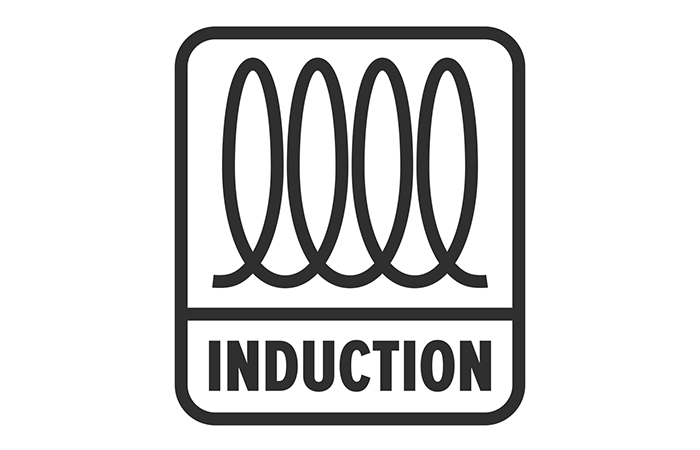
However, it is important to ensure that the base is even. If it is not, there will be a gap between the pot and the hob. The magnetic field is therefore interrupted and the desired heat is not generated.
Can an induction hob have a negative effect on pacemakers?
People with pacemakers often fear that an induction hob could have a negative effect on the function of the pacemaker. This concern is not entirely unfounded, because the pacemaker is able to receive electromagnetic impulses from the induction hob. It could therefore mistakenly assume that the impulses come from the heart. However, several things have to come together: For example, there is only a danger if the pot is not placed correctly on the hotplate and the cook uses a metal cooking spoon. Nevertheless, people with pacemakers should always talk to their doctor before buying an induction hob. In addition, the manufacturer’s instructions for use should be followed. If the instructions for use do not contain any information about pacemakers, it is advisable to contact the manufacturer directly.
What is the difference between an induction hob and a ceramic hob?
Induction hobs also have a glass ceramic plate. This is colloquially referred to as a ceramic hob. Strictly speaking, however, this is a brand name for certain glass ceramic hobs. The difference between a classic glass ceramic hob and an induction hob is in the way the heat is generated: under the glass ceramic hob there are heating coils that first transmit the heat to the hob and then to the cookware. The induction hob works on a completely different principle, because here it is not the plate that is heated, but only the pot or pan. The glass ceramic plate is therefore literally skipped by the electromagnetic alternating fields. So it remains cold or at most absorbs some residual heat from the pot.
My induction hob makes noises when I cook. Is that normal?
In contrast to the classic electric cooker and the gas cooker, an induction hob makes noises when cooking. This is perfectly normal, because the noises are caused by technical reasons. An electromagnetic alternating field is generated in the appliance. The necessary technology is complicated and very sensitive to heat. Pots and pans radiate not inconsiderable amounts of heat, which could affect the electronics. Every induction hob therefore has a fan that comes on automatically when the induction hob is started. The noise can increase over time – mainly due to the inevitable wear of the fan’s bearings. However, the following applies: High-quality appliances are usually somewhat quieter in operation than models from the lowest price segment. They also do not wear out as quickly, so it is well worth spending a little more money on an induction hob.

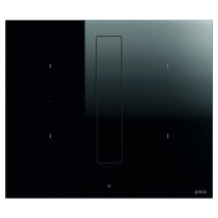
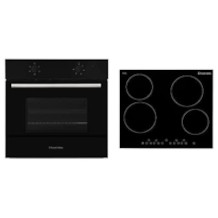
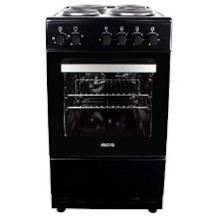
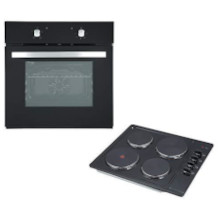
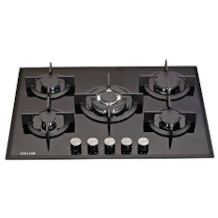
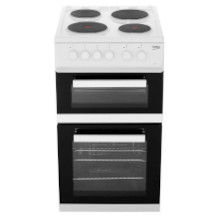
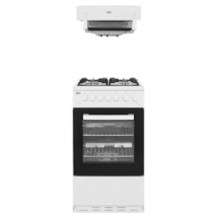
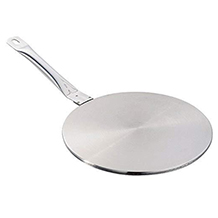
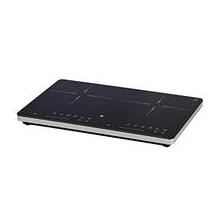
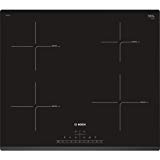
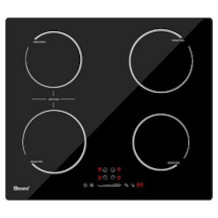

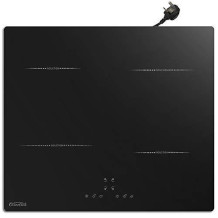
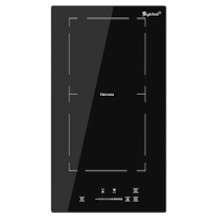
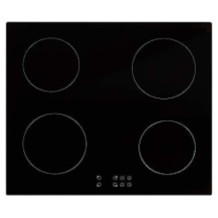

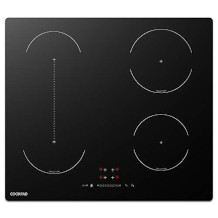

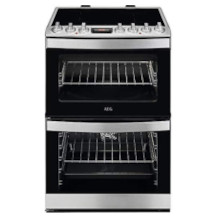
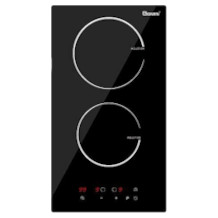

 434 reviews
434 reviews
